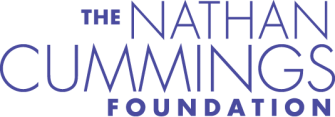Aesthetic Perspectives: Attributes of Excellence in Arts for Change
Arts & Civic Engagement Tool Kit from Animating Democracy
Evaluation Tools & Frameworks
Additional Arts & Civic Engagement Tools
NEW! Aesthetic Perspectives: Attributes of Excellence in Arts for Change
 Aesthetic Perspectives: Attributes of Excellence in Arts for Change is a framework to enhance understanding and evaluation of creative work at the intersection of arts and civic engagement, community development, and justice. Aesthetic Perspectives describes 11 attributes of excellence defined by artists that can be observed in socially engaged work in all artistic disciplines. These attributes address the potency of creative expression to embody and motivate change.
Aesthetic Perspectives: Attributes of Excellence in Arts for Change is a framework to enhance understanding and evaluation of creative work at the intersection of arts and civic engagement, community development, and justice. Aesthetic Perspectives describes 11 attributes of excellence defined by artists that can be observed in socially engaged work in all artistic disciplines. These attributes address the potency of creative expression to embody and motivate change.
For the FULL framework plus these other items, click here.
Companion Guides for ARTISTS, FUNDERS, EVALUATORS, EDUCATORS, and CURATORS offer ideas and insights to apply the framework toward their particular interests.
Posters of the 11 aesthetic attributes offers a visual reference and essential text describing the attribute’s relationship to social justice and sample questions




Arts & Civic Engagement Tool Kit
Order from the Americans for the Arts online Bookstore.
The Arts and Civic Engagement Tool Kit: Planning Tools and Resources for Animating Democracy in Your Community features customizable worksheets containing thoughtful questions, clarifying sidebars, and examples to help users plan, design, and partner to create meaningful engagement activities. Resources on the CD include:
- A context for understanding the possibilities at the intersection of art and civic life;
- Definitions of common terms and diagrams to situate arts-based civic engagement work in a broader context of arts and community engagement;
- Imagine, Define, Design—a series of worksheets designed to help users define a project’s core artistic elements and civic or social concern;
- Worksheets on forging effective partnerships;
- A framework to create meaningful dialogue at arts events; and
- A compilation of civic engagement resources including organizations, websites, and publications.
Check out these sample tools from the Arts & Civic Engagement Tool Kit:
Developing a Logic Model [PDF]
A development tool to help cultural organizations plan, define, and evaluate arts-based civic engagement projects
Imaging/Define/Design: Planning Arts-Based Civic Engagement Projects [PDF]
Worksheets containing thoughtful questions, clarifying sidebars, and examples to help define a project’s core artistic elements and civic or social concerns
Sample Audience/Participant Questionnaire [PDF]
A sample document design to help gauge the effects of arts-based civic dialogue experiences
Areas of Impact: Civic, Artistic, Institutional [PDF]
A planning document which reflects on the civic, artistic, and institutional impact of arts-based civic engagement projects
Evaluation Tools & Frameworks
Go to the IMPACT site for evaluation tools, frameworks, and resources to help assess the impact of arts for change work. This repository contains useful, practical materials that can help you create an evaluation plan; design your evaluation approach; develop or adapt tools and instruments; and otherwise move your evaluation forward.
Additional Arts & Civic Engagement Tools
Tools, templates, and sample materials for planning, implementing, and evaluating arts- and humanities-based civic engagement projects are available:
Art and Civic Engagement: Mapping the Connections [PDF]
A tool created by the Walker Art Center in Minneapolis, MN that explores how a contemporary art center can become an effective forum for civic engagement
Characteristics of Dialogue vs. Debate [PDF]
Excerpted from Daniel Yankelovich's The Magic of Dialogue, this text examines the differences between debate and dialogue
Planning Considerations for Arts-Based Civic Dialogue: An Animating Democracy Worksheet [PDF]
An outline of planning considerations for arts-based civic dialogue activity
An overview of the mindmap tool which explores its uses, advantages, and the steps involved in creating one
A sample mindmap designed for the Animating Democracy Initiative
Participatory Action Research (PAR) Approach to Planning, Reflection, and Documentation [PDF]
PAR is an approach to research and learning that uses different methods to address issues of possibilities identified and defined by a community. This document explores the five characteristics of PAR and introduces it's framework.
Liz Lerman Dance Exchange Blind Lead Exercise [PDF]
Blind Lead, an exercise from the Liz Lerman Dance Exchange's Community Arts Toolbox, introduces movement partnering and presents an opportunity for individuals and groups to observe their ways of leading and following. For more information, view the Liz Lerman Dance Exchange Case Study.
Liz Lerman Dance Exchange "One to Ten" Exercise [PDF]
"One to Ten," an exercise from The Liz Lerman Dance Exchange's Community Arts Toolbox, uses nonverbal dialogue to experiment with shapes, range, and basic partnership. For more information, view the Liz Lerman Dance Exchange Case Study.